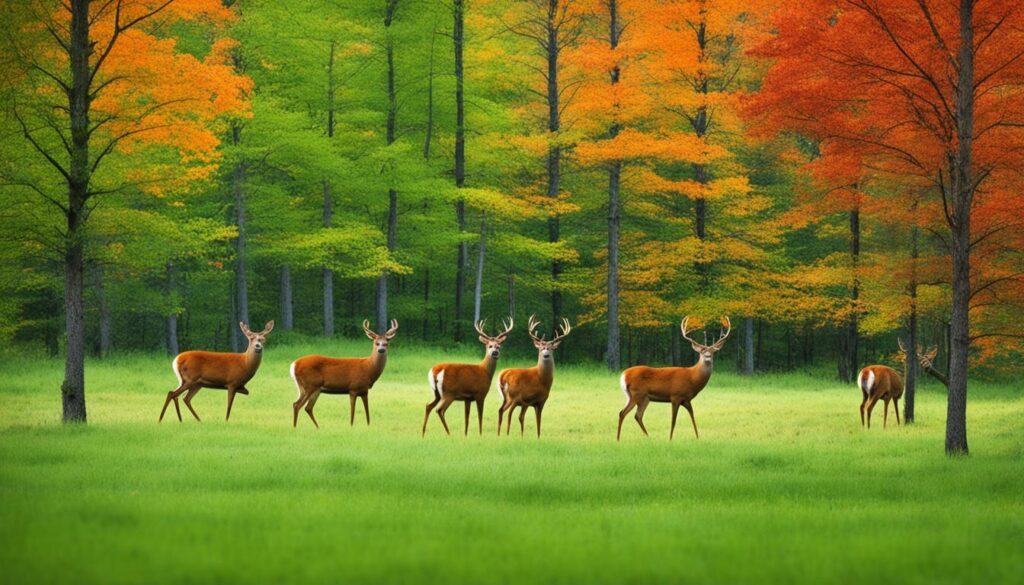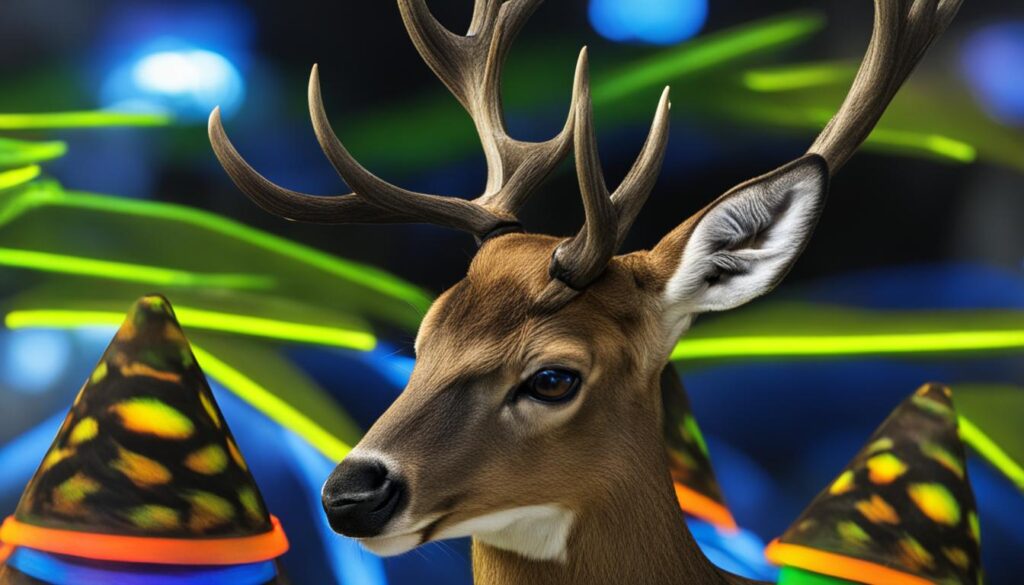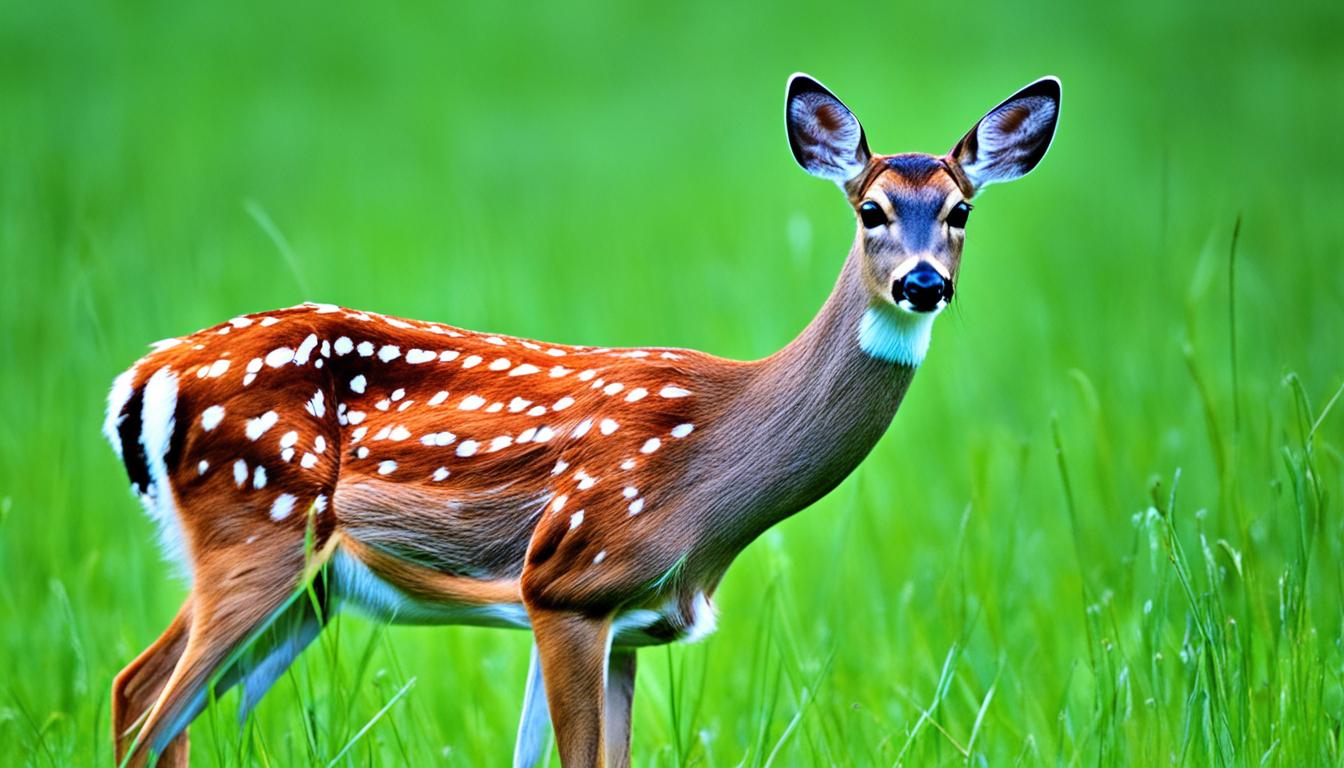Deer vision has long been a topic of interest among hunters, particularly regarding their ability to perceive colors. Can deer see color? Let’s delve into the fascinating world of deer vision to find out.
Studies conducted since the early 1990s have shed light on deer vision and color perception. While humans have trichromatic vision with three types of cone photopigments, deer possess dichromatic vision with only two types of cone photopigments. This difference in color receptors impacts their ability to see and distinguish various colors.
Deer have limited color vision, primarily perceiving blue and green wavelengths. However, they lack sensitivity to longer wavelength colors like red and orange. As a result, their color vision is not as advanced as that of humans.
Understanding how deer perceive color is crucial for hunters. By comprehending their visual capabilities, hunters can make informed decisions when it comes to clothing choices while hunting.
Content Highlights
ToggleKey Takeaways:
- Deer have limited color vision, with the ability to perceive blue and green wavelengths.
- Deer lack sensitivity to longer wavelength colors like red and orange.
- Their dichromatic vision differs from humans’ trichromatic vision.
- Deer have better nighttime vision than humans, thanks to a higher concentration of rods in their eyes.
- The reflective layer called the tapetum in deer’s eyes allows them to see in low light conditions.
Differences Between Human and Deer Vision
Comparing human and deer vision reveals several key differences. Humans have trichromatic vision, meaning we have three types of cone photopigments that allow us to perceive a wide range of colors. Deer, on the other hand, have dichromatic vision and possess only two types of cone photopigments. They lack the “red” cone, which is sensitive to long wavelength colors like red and orange. As a result, deer can distinguish blue from red, but not green from red or orange from red. Deer also have better nighttime vision than humans due to a higher concentration of rods in their eyes. Their eyes’ reflective layer, the tapetum, further enhances their ability to see in low light conditions.

“Deer have dichromatic vision and possess only two types of cone photopigments.”
The Impact of Clothing on Deer Perception
When it comes to hunting, the choice of clothing is a topic that often raises concerns among hunters. Many believe that the color of the fabric plays a significant role in deer perception. However, it may come as a surprise that the actual color of the clothing is relatively unimportant to deer. What matters more is how well the pattern blends with the surroundings.
Camouflage clothing has proven to be highly effective for hunters as it helps break up the human silhouette and blend into the environment seamlessly. By mimicking the natural patterns of trees, leaves, and vegetation, camouflage clothing ensures that hunters remain unnoticed by deer.
On the other hand, solid unbroken patterns, especially those in light colors, should be avoided. These patterns can reflect light and draw the attention of deer, making it more challenging to stay hidden. Additionally, clothing made from vinyl or plastic materials should be avoided due to their reflective properties, which can make hunters more visible to deer.
Another factor to consider is the UV brightness of hunting clothes. Some laundry products contain UV brighteners that could make the clothes more visible to deer. To avoid this, it is advisable to avoid using such products or to eliminate the UV radiance when necessary.
“Camouflage clothing helps hunters break up their silhouettes and blend into the environment, making it more difficult for deer to spot them.”
Remember, the goal when choosing hunting clothing is to remain undetected by deer. Therefore, opt for camouflage patterns that closely resemble the natural environment you’ll be hunting in. By taking into account the visual capabilities of deer and selecting appropriate clothing, you can significantly increase your chances of a successful hunt.

The Impact of Clothing on Deer Perception - Key Points:
- The actual color of the fabric is relatively unimportant to deer.
- Camouflage clothing is recommended to break up the human silhouette and blend into the environment.
- Solid unbroken patterns, especially of light colors, should be avoided as they can reflect light and draw attention.
- Clothing made from vinyl or plastic materials should be avoided due to their reflective properties.
- Avoid using laundry products with UV brighteners as they can make the clothes more visible to deer.
Conclusion
Deer have a unique color perception compared to humans. While they have limited color vision, being able to see blue and green wavelengths, they lack sensitivity to red and orange colors. Their dichromatic vision, higher concentration of rods, and reflective tapetum give them superior nighttime visual capabilities.
When hunting, it is important to consider how clothing choices can impact deer perception. Camouflage patterns that blend into the environment are the most effective, as they break up the human silhouette and help hunters remain undetected. Solid unbroken patterns, especially of light colors, should be avoided as they can reflect light and draw attention.
Ultimately, a hunter’s success relies on factors such as scent control, movement, and the ability to remain still. While choosing the right clothing is important, it is the overall strategy and skills that play a greater role in hunting success than the specific color of the clothing worn.
- California Deer Hunting Guide: Seasons, Rules, Permits, and More - 26 June 2024
- Arkansas Deer Season 2024 [Schedules, Licenses, Bag Limits & More!] - 26 June 2024
- 2024 Arizona Deer Season New Dates & Rules! - 25 June 2024




